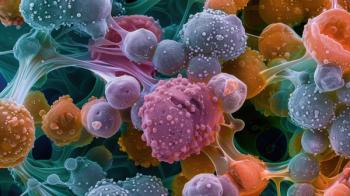
Study: Innovative Active Learning Increases Confidence, Knowledge of Pharmacists Managing CDK4/6 Inhibitors in HR+/HER2- Advanced Breast Cancer
Key Takeaways
- Role-specific education for pharmacists is crucial to address the growing complexity of oncology treatments and improve patient outcomes.
- Two educational programs were developed: an electronic article with interactive case studies and a live virtual symposium with counseling videos.
The objective of the study was to develop an education program that increased confidence and knowledge of pharmacists managing CDK4/6 inhibitors.
Education based on specific roles and practice settings for pharmacists is necessary to manage diverse needs, thus enhancing patient outcomes, according to a poster presented at HOPA Ahead 2020.
The objective of the study was to develop an education program that increased confidence and knowledge of pharmacists managing CDK4/6 inhibitors. There is a great need for effective education to match the annual growth and complexity of oncology FDA approvals, according to poster.
In early 2019, 2 collaborative programs were launched, including:
- A 2.5-credit hour electronic article incorporated cases with patient counseling videos. Case studies were used to foster application of clinical strategies to practice scenarios with interactive decision trees to stimulate real-life management of adverse effects (AEs).
- A 1.5-hour live virtual symposium embedded counseling videos based on real-life scenarios in 3 settings of patient-centered pharmacist care. Videos were used to highlight significant AEs and showed therapy-specific challenges in various settings.
The educational objectives were to distinguish current treatments strategies for hormone receptor (HR)-positive/human epidermal growth factor receptor 2 (HER2)-advanced breast cancer; examine the efficacy, safety, and mechanism of action of CDK4/6 inhibitors; and identify appropriate AE management, including communication strategies for patients receiving CDK4/6 inhibitors.
Data were analyzed 12 months after launch in February 2020, with 1888 pharmacists completing activities for Accreditation Council for Pharmacy Education credit. Self-identified practice settings included 42.5% retail, 25.3% health-system, and 12.0% specialty pharmacy.
Correlating pre- and post- assessment case-based questions focused on a lab value AE showed a knowledge increase of 51% correct responses to 88% with the use of simulated decision case and video. Pre- and post-assessment case-based questions on counseling for a clinically significant interaction demonstrated a knowledge increase of 34% to 75% with use of a video-embedded case and simulation.
In the pre-activity phase, 51% of learners identified themselves as moderately, very, or extremely confident in using treatment strategies for HR-positive/HER2-advanced breast cancer compared with 85% post-activity.
The study authors concluded that after completing 1 or both activities, pharmacists saw an increase in confidence, knowledge, and competence. The use of innovative videos and adaptive case simulation sets a precedent in designing active education using clinical scenarios applicable to multiple oncology practice settings, according to the poster.
REFERENCE
Innovative Active Learning Increases Confidence and Knowledge of Pharmacists Managing CDK4/6 Inhibitors in HR+/HER2- Advanced Breast Cancer (BC) Poster Presentation. HOPA conference. Published March 12, 2020. https://www.eventscribe.com/2020/HOPAahead/PosterTitles.asp?pfp=PosterTitles. Accessed May 6, 2020.
Newsletter
Stay informed on drug updates, treatment guidelines, and pharmacy practice trends—subscribe to Pharmacy Times for weekly clinical insights.






















































































































































































































